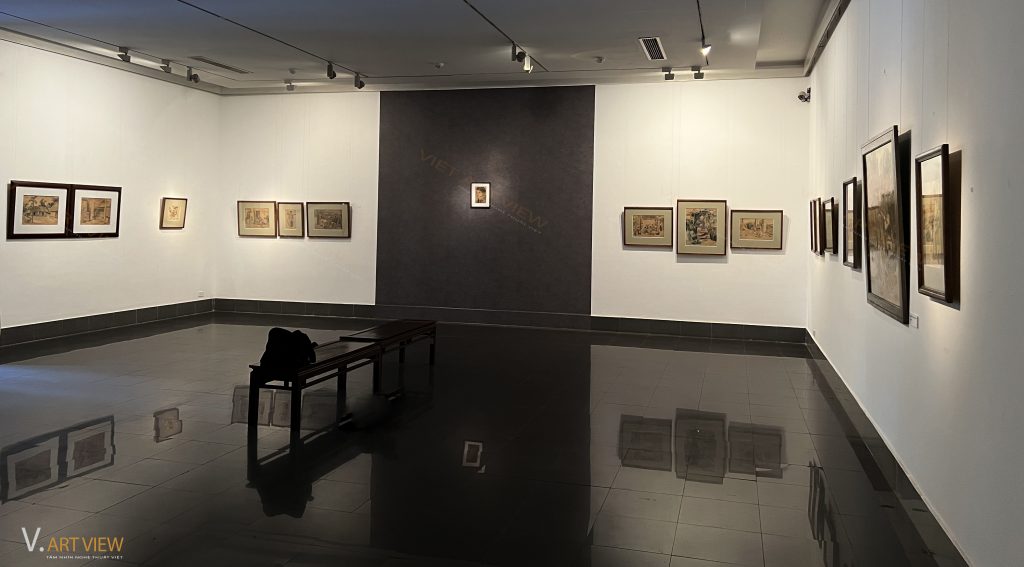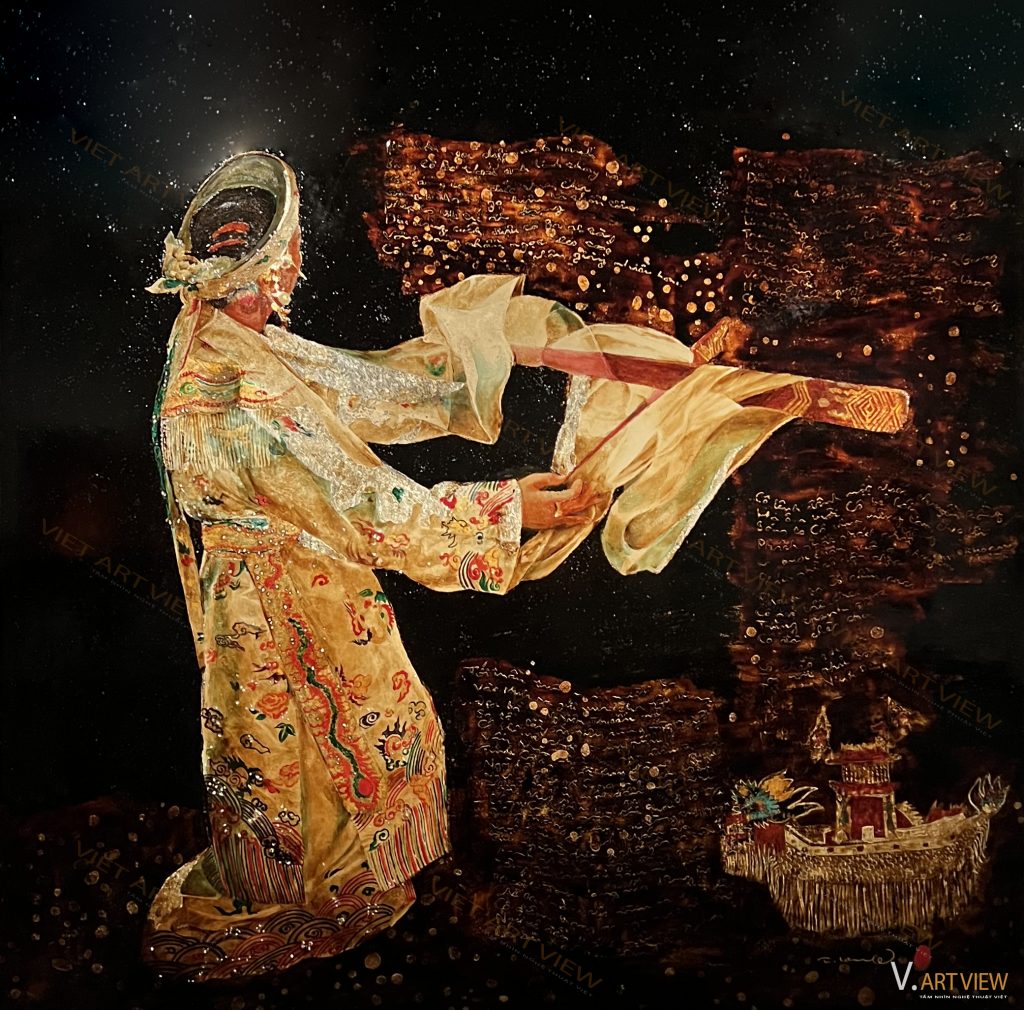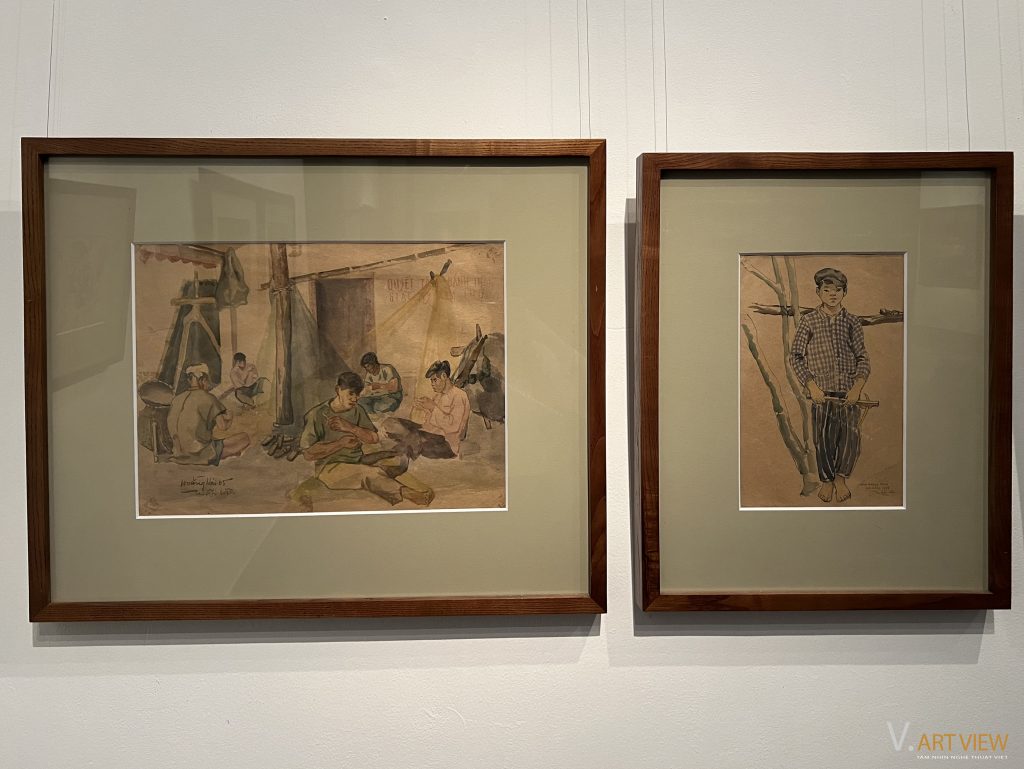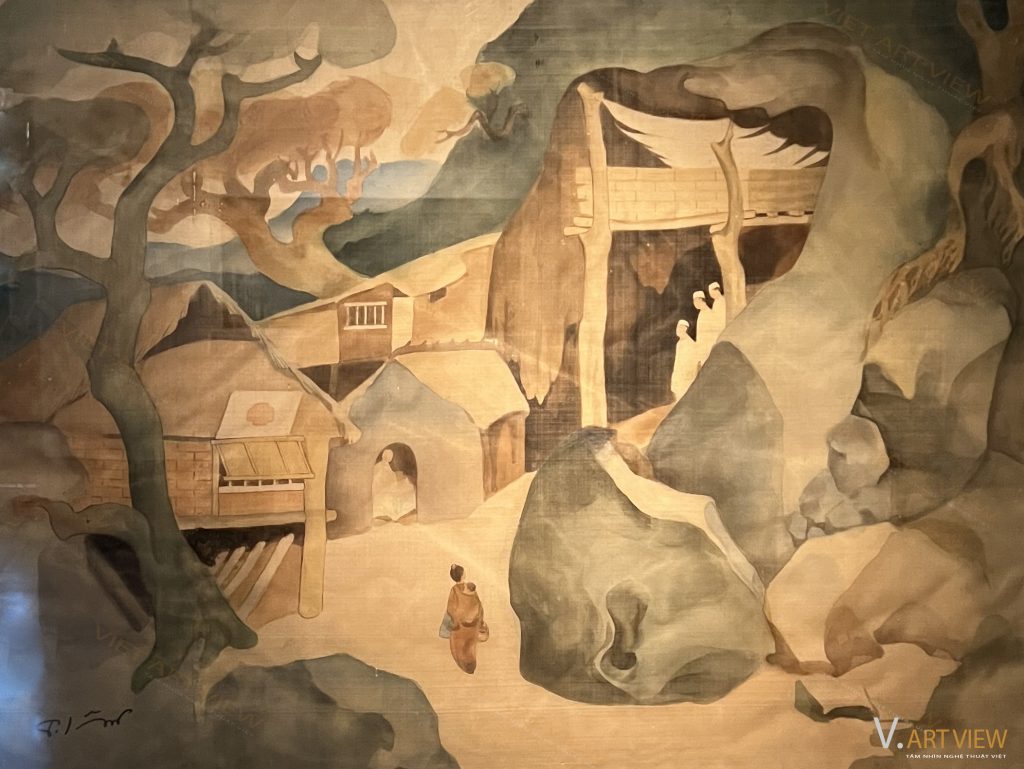The exhibition ‘Father and son’ is a special event that artist Trần Tuấn Long dedicated to commemorating the 90th birthday of his father—artist Trần Tuấn Lân (1933–2010), thereby introducing to public more than 60 works by the father and the son in their art career. The exhibition is on display from October 26, 2023–October 31, 2023 at Việt Nam Fine Arts Museum (66 Nguyễn Thái Học, Hà Nội).

Father and son are both artists but belong to two different generations, with different styles, but they both show a passion for art and are serious about their profession to bring beautiful paintings which are rich in artistic value to art lovers.
At first, artist Trần Tuấn Lân entered the path of artistic activities through music, but then he turned to fine arts, choosing to paint and teach to pursue throughout his life. His works mark a continuous creative journey in every corner of the country through themes of war, building and defending for the fatherland, or the living and productive labor scene where he lived—the mining area Quảng Ninh.

With the exhibition, a part of memories seems to echo through vivid pencil and watercolor sketches about the Laos battlefield during the war, about the West of Trường Sơn, about the Northeast, the border, from more than half a century ago, it was recorded meticulously and delicately by artist Trần Tuấn Lân in the language of painting. Those sketches not only reveal the artist’s direct emotions when facing beautiful scenes, things, and people, but also contain sincere feelings. Sketches are the artist’s consciousness at that time.



In addition to displaying sketches, there are also large-scale lacquer, lacquer engraving and oil paintings, such as the three-panel lacquer painting Mạo Khê coal mine created by Trần Tuấn Lân in 1996. The entire coal mining industrial area was captured by him in a medium-sized lacquer work that is harmonious in color and delicate in shaping. He observed and meticulously represented every detail, making the scenes appear in the painting extremely vivid. In the midst of the dark blue color, large and small buildings shaped by eggshells stand out as eye-catching bright spots, creating an interesting visual effect. It can be seen that he had to diligently research the images and dozens of sketches to create a harmonious and coherent work in terms of visual composition, helping viewers to visualize the exploitation activities of the industrial area.

Trần Tuấn Lân (1933 – 2010). Mạo Khê coal mine. 1996. Lacquer. 275×156 cm.

Trần Tuấn Lân (1933 – 2010). Tuần Châu. 2003. Lacquer. 120×160 cm
In addition to subjects of war and production, he also painted about folk culture such as Ca trù, Thạch Sanh, The swing. Traditional beauty from art forms, festivals, and ancient stories he represented extremely vivid thanks to the technical mastery from the experience of a long-time teacher.

Trần Tuấn Lân (1933 – 2010). The swing. 1990. Oil. 100×86 cm.
In the painting Ca trù created in 1998, the artist placed the two characters of a singer and a musician in the central of the work. From the four-piece outfit, the musical instruments, the characters’ faces and charisma were described in great detail. The deep red color he used in this painting makes the space have emotional depth, appropriate with the spirit and nature of ‘Ca trù’—a popular form of chamber music in the North and North Central of Việt Nam.

Trần Tuấn Lân (1933 – 2010). Ca trù. 1998. Lacquer. 91×77 cm.
Continuing the artistic tradition from his father, artist Trần Tuấn Long has spent nearly 30 years pursuing lacquer career and in the past 10 years he has made a mark in the hearts of art lovers with large-scale lacquer paintings and the theme of ‘Đạo Mẫu’—a long-standing folk belief of Việt Nam.

Choosing to pursue this theme is a risk for the artist because this is a rather sensitive topic which is related to cultural beliefs. However, with an appropriate artistic perspective, artist Trần Tuấn Long has proven his choice to be correct, his paintings suggest to viewers more perspectives on Vietnamese folk culture.

Trần Tuấn Long (Born in 1967). Princess of Thoải Phủ. 2017. Lacquer. 120×120 cm.

Trần Tuấn Long (Born in 1967). Ritual of Dao people. 2020. Lacquer. 120×160 cm.
The paintings displayed in the exhibition revolve around the ritual of ‘lên đồng’ and the holy altars in ‘Đạo Mẫu’. The colorful costumes of the ritual with countless decorative patterns, layered outfit and jewelry were all exploited by him to the fullest to put them into lacquer. His mastery of technique and visual language helps him express the overall beauty of appearance, charisma, spirit, and sacredness in each work, thereby highlighting the religious images, the ancient folk features. This folk belief seems to be concretized, the sacred atmosphere at the temple also becomes closer to the earthly world.

Trần Tuấn Long (Sinh 1967). Đông A hiển thánh. 2019. Lacquer. 120×120 cm.
Painting of cultural subjects is also a means for artists to preserve the long-standing values of national culture and transfer them for future generations. To leave an impression in the hearts of viewers, a painting that is only visually beautiful is not enough, but must also contain messages and profound human meanings. Both artists Trần Tuấn Lân and Trần Tuấn Long have done that, they have succeeded in bringing cultural identity closer to the public by their talent and passion of art.
The exhibition ‘Father and son’ is a tribute and deep gratitude of artist Trần Tuấn Long to his father. It is the inheritance and continuation of the family’s artistic tradition, thereby contributing to the flow of Vietnamese contemporary art.
Some other works at the exhibition:

Trần Tuấn Lân (1933 – 2010). Island of Hà Nam. 1990. Lacquer engraving. 60×90 cm.

Trần Tuấn Lân (1933 – 2010). The west of Trường Sơn. Lacquer. 83×112 cm.

Trần Tuấn Long (Born in 1967). Ban lộc. 2021. Lacquer. 120×80 cm.


Trần Tuấn Lân (1933 – 2010). Self portrait.

Trần Tuấn Lân (1933 – 2010). Hospital in Sầm Nưa. Silk. 60×80 cm.

Trần Tuấn Long (born in 1967). Mother and child. 2018. Lacquer. 90×120 cm.
Written by Viet Art View
Copyrights belong to Viet Art View







